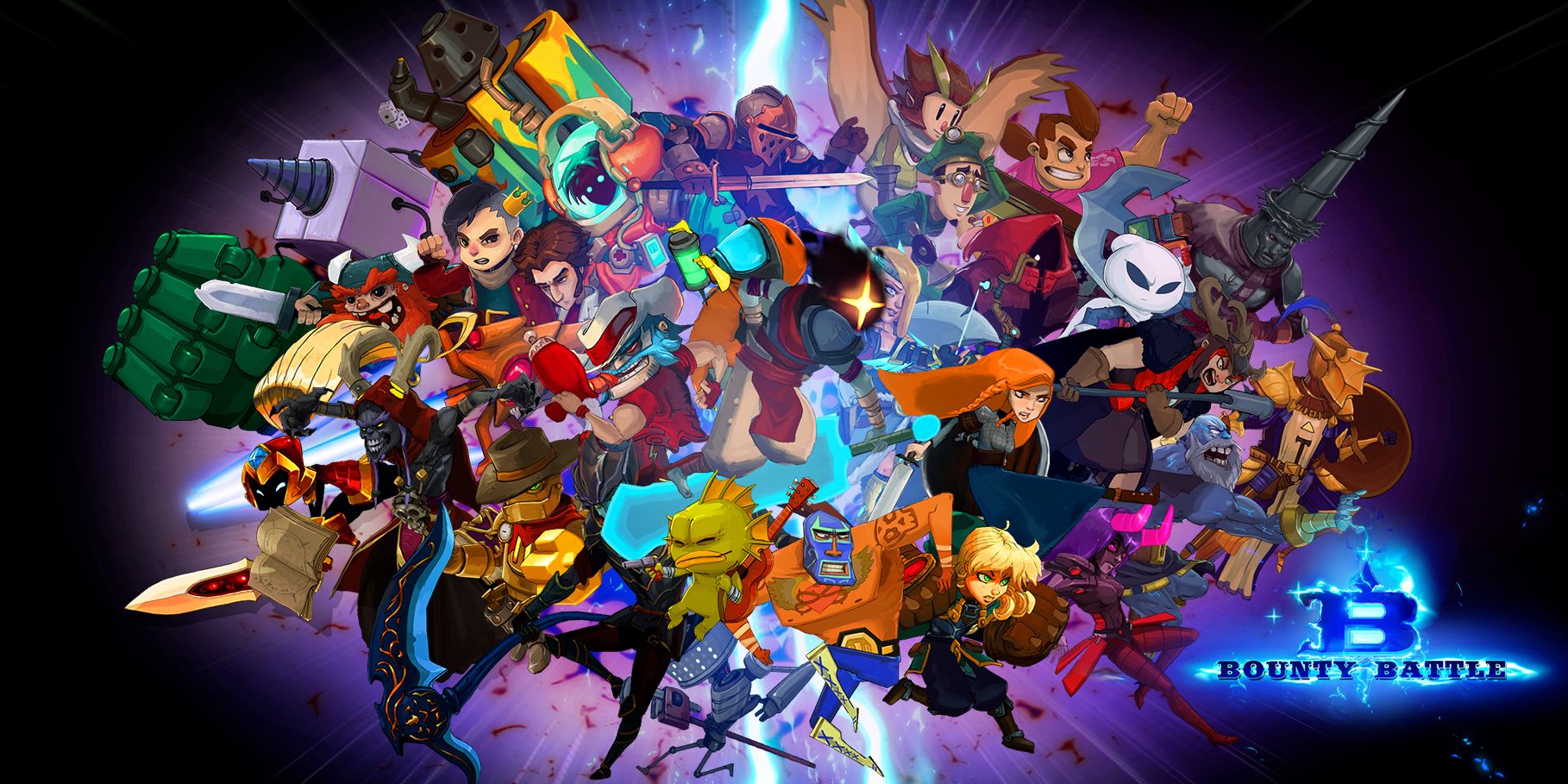“Indie Smash Bros.” sounds like a perfect idea if done well, and Bounty Battle’s animated intro sequence builds excitement for this very notion, as characters from all over the 2D indie spectrum leap into the ring. Otus from Owl Boy and Juan from Guacamelee are sucked into a portal along with heroes and villains from a slew of other games, and the sequence is exhilarating, doing a great job of pitching this foolproof concept to the player. Unfortunately, while the characters in the opener fall into their arenas with grace, the game itself doesn’t quite stick the landing.
Bounty Battle is a hard nut to crack. On one hand, it is a great idea painstakingly curated by the enthusiasm of its developer, Dark Screen Games. Getting all of these characters in one place was clearly no small feat, and the game doesn’t want players to forget how momentous this occasion really is. On the other side of the coin lies gameplay that lacks in gravitas and feels more like a mid-2000s internet flash game than a fine-tuned experience that rivals Super Smash Bros. The game rips so much of its structure from the Nintendo classic series, but does so without any of the finesse required to make a lasting impression.
Click the button below to start this article in quick view.
Gameplay modes in Bounty Battle come down to Tournament and Challenge Modes for solo players and Versus Mode for couch co-op. The two solo modes seem to be named backward as the Tournament Mode is actually a series of fights that involve completing a number of different challenges. The player may be tasked with surviving waves of enemies, fighting specific groups or knocking all other characters out of the ring. The Challenge Mode, conversely, is the typical tournament style game mode that is expected from any fighting game. These two modes are fun, but Tournament Mode doesn’t allow players to choose a starting character. The mode is designed around players succeeding as every character in order, so it may take quite a while before players can use their favorite fighters. Versus Mode allows up to four players to battle it out in arenas that closely mimic those found in Super Smash Bros.
In general the combat is fun, but it takes a bit too long for it to become this way. The characters feel as though they are in a flash game and not a current gen title, and character movements are stilted and ridged despite most of these characters coming from games that moved with perfect fluidity for 2D sprites. The whole experience takes a while to get into because obvious animation changes suck the power out of most attacks. This is compounded by the game’s overall performance.
The frame rate of this title is dreadful and has no systems in place to skip certain frames to maintain speed. In the middle of attacks the whole game will slow down to half its running speed while the console catches up. This problem becomes unbearable in Versus mode, wherein the game expects players to fight up to three other characters, jumping, slashing, and firing particle based projectiles. The game never slows to a full halt, but it is impossible to get into the action when the game can’t hold its own weight on consoles that can render games like Ghost of Tsushima without a hitch.
While the combat is something that can be familiarized with over time, the UI overall feels rushed. Fights end abruptly as the final blow lands, quick cutting to the player standing idle in the center of the screen. There is no indication of whether or not the player has won or lost until moments later when either “Game Over” or “Good Game” slowly appears on screen. There is no “KO,” no animation of the loser falling to the ground in slow motion, and no change of soundtrack. Battles begin and end so abruptly in a manner that continues to hearken back to older games that were only focused on gameplay, and not on presentation. Additionally, at the end of a round in Tournament Mode, the game will kick players back to the starting menu instead of to the Tournament menu. This along with the naming conventions makes the whole thing feel sloppily put together.
Online, and in 2006, Bounty Battle would have been an impressive experience. Playing with a friend is a fun little distraction, and seeing multiple indie characters under the same roof is refreshing. The issue is that for as much as this game wants to be Super Smash Bros., it doesn’t put forth the effort to feel like a polished package. Exploding characters in a beam of white light when they fall off the arena isn’t all it takes to be a worthwhile experience. Bounty Battle is a game that may find some fans, but isn’t one that will be played for much longer than a few days except by the most diehard of indie fans.
Bounty Battle is available on Nintendo Switch, PlayStation 4, Xbox One, and Microsoft Windows. A PlayStation 4 code was provided to Screen Rant for the purposes of this review.
